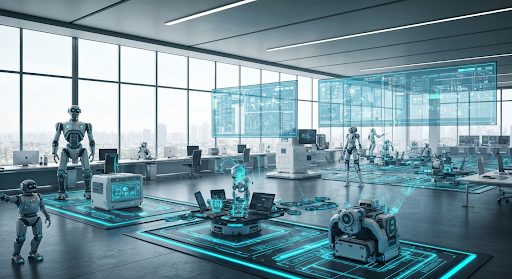Chemistry for Better Energy Management
Chemistry for Better Energy Management
Energy is definitely the driving force behind modern societies, their growth but also their development.
The world has become a machine that moves forward using electricity delivered to it by high voltage lines. Some analysts have predicted that the watt could become our next monetary unit. This analysis is debatable because if energy is day more at the heart of economic and societal issues, the comparison must be refined because just as there are several monetary currencies, there are several sources of a watt, and tomorrow. The strongest watt will be the one that requires the least currency. Such a scenario justifies a growing need for the conversion and storage of energy in order to facilitate the use of renewable energies and to promote electric transport. Whatever the current energy storage/conversion systems (fuel cells, batteries, photovoltaic cells), they have in common to suffer from the lack of adequate materials for their production. That is, they are all dependent on the vagaries of chemistry not to provide high-performance materials on request.
The chemists were able to partially meet this demand with the development of Li-ion technology, which is the most advanced electrochemical xx th century.
In just twenty years, this technology has given birth to a thriving industry. It has conquered the portable electronics market and has become the best choice for electric vehicles, and even for network applications.
Unfortunately, like many technologies, it will not be able to satisfy all the hopes based on it. Estimates of the known limited lithium reserves highlight the limits of the use of this technology on a very large scale. To cope with the possible lithium shortage that many newspapers, admittedly too alarmist, have not ceased to mention recently, chemists are currently giving new life to sodium chemistry through the development of new open-frame materials capable of ‘reversibly insert sodium ions.
Energy news is obviously sustainable development, a context which adds another constraint, even an opportunity, for chemists. Technological breakthroughs and not incremental improvements are needed. To do this, we have to turn away from the beaten track and encourage the chemist to move towards innovative synthesis methods, to explore new avenues, and even to develop new concepts.
One of the most fascinating avenues is to turn to primitive organisms (viruses, unicellular algae, bacteria) capable of producing nanometric minerals by bio-mineralization which brings into play very efficient catalysts (enzymes), an approach likely to ” give new life to materials neglected or of limited interest for energy applications. In the same vein, although they are preliminary, the current work on batteries based on renewable organic electrodes prepared according to the concepts of “green chemistry” could revolutionize in the future the way we store energy. All living energy processes are based on redox couples involving organic molecules (Krebs cycle for example). Why, we chemists, Could we not ensure that one day they also serve to power our domestic appliances as well as that of our cars? Without dreams, the vocation of chemist cannot exist.
What will tomorrow’s chemistry be like in terms of energy?
Due to the limited timescale in which we work, it will need to be guided by predictive studies. The progress made in theoretical calculations aimed at creating a “genome of materials” is encouraging. However, the researcher’s intuition, curiosity, and green thumb will remain essential for any future adventure. It is also certain that the increase in trans-disciplinarily will facilitate new advances. Also, in all likelihood, the next discoveries will be made at the borders of several disciplines, between biology, chemistry, and physics, hence the need to unite various communities and create melting pots of scientific culture.
Chemistry has definitely revolutionized our life expectancy, our means of living and our lifestyles. For this, it drew on the mineral and plant reserves of our planet. Without fossil materials and petrochemicals, our synthetic chemistry would be orphaned. Without the ores and the associated chemistry of materials (association between a chemical compound and its production process) which allow them to be endowed with special magnetic, electronic and optical properties, today we would not have such a variety of devices. performers on which humanity becomes dependent.
We depend on a planet from which we have consumed in a few decades, if not a few centuries, the ingredients that it took billions of years to produce.
Chemists, let us unite to disseminate this message and ensure that this year of chemistry makes us aware of this fact and, by the same token, makes us sanction the beginning of another chemistry already called “Chemistry of reincarnation”.
It is chemistry centered on recycling and aims to give a second life to chemical elements in the process of exhaustion. Recycling is certainly not a chic word for our community which too often relies on fashion or advertising effects; however, this activity will become essential in the decades to come. May the chemist remains humble and creative, may he know how to serve as a messenger and guardian of deontology and ethics vis-à-vis our society, the year of chemistry will be all the more beautiful.



